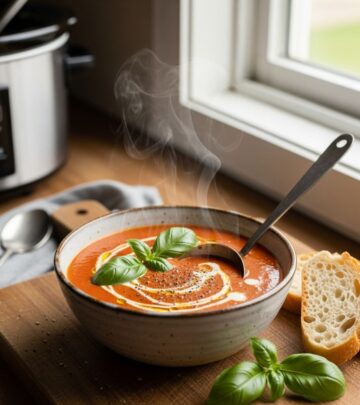Sweet Pickled Beets (Canning Guide & Recipe)
A step-by-step guide to sweet pickled beets, including water bath canning instructions, tips, and FAQs for perfect homemade results.

Sweet Pickled Beets: The Complete Canning Guide
Pickled beets are a classic homemade delicacy with vibrant flavor and unbeatable tang. This guide will walk you through every step of making sweet pickled beets from scratch, focusing on water bath canning methods for safe, long-term storage. Whether you’re a first-time canner or an experienced preserver, this article provides all the essential details, tips, and answers to frequently asked questions for guaranteed success.
Table of Contents
- Recipe Overview
- Ingredients & Equipment
- Step-by-Step Instructions
- Canning Methods & Safety
- Safe Substitutions & Variations
- Storage & Serving Suggestions
- Tips & FAQs
Recipe Overview
This sweet pickled beets recipe is designed for safe home canning using a water bath canner or steam canner. It includes a classic brine of vinegar, sugar, and spices that creates that signature sweet-tangy flavor, perfect for salads, sides, or snacking. These beets can be enjoyed year-round and make excellent gifts.
- Yield: About 6 pints (or 12 half-pints)
- Prep Time: 1 hour
- Canning Time: 30 minutes (adjust for altitude as needed)
- Difficulty: Intermediate
Ingredients & Equipment
Ingredients
- Beets (enough to yield 3 quarts peeled, sliced beets; usually 8–10 medium-sized beets)
- 4–6 small onions (optional, 2–2.5 inch diameter)
- 2 cups granulated sugar
- 4 cups 5% acidity vinegar (distilled white or apple cider vinegar)
- 2 cups water
- 1 cinnamon stick
- 1 tablespoon whole allspice
- 1.5 teaspoons canning salt (not table salt)
Optional Flavor Additions:
- Other whole spices (e.g., cloves, peppercorns, mustard seeds) — adjust to taste
- Leave out cinnamon if preferred for a more neutral flavor
Equipment
- Large pot for cooking beets and making brine
- Water bath canner (or steam canner)
- Canning jars (pint or half-pint size only, not quart)
- Canning lids and rings
- Jar lifter
- Canning funnel
- Large spoons and ladle
- Large mixing bowls
- Sharp knife and vegetable peeler
- A clean towel and dishcloths
Step-by-Step Instructions
1. Preparing the Beets
- Trim beet tops, leaving 1–2 inches of stem and root to prevent bleeding.
- Scrub beets thoroughly to remove soil.
- In a large pot, cover the beets with water and bring to a boil. Reduce heat; simmer until tender (30–45 minutes, depending on size).
- Drain and cool; slip skins off under cool running water. Trim roots and stems completely now.
- Slice or cut beets into desired shapes: rounds, wedges, or chunks.
2. Optional: Preparing Onions
- If using onions, peel and slice them into thin rounds or half-moons.
3. Making the Pickling Brine
- Combine vinegar, water, sugar, canning salt, cinnamon stick, and whole allspice in a large saucepan.
- Bring mixture to a boil, stirring frequently to dissolve sugar and salt completely.
- Simmer gently for 5–10 minutes to infuse flavors.
- Remove cinnamon stick and allspice (optional, for a clearer brine).
4. Packing the Jars
- Fill hot, sterilized jars with sliced beets (and onions if using), leaving 1/2 inch headspace.
- Pour boiling brine over beets, still maintaining the 1/2 inch headspace.
- Remove air bubbles with a non-metallic spatula or bubble remover.
- Wipe jar rims clean with a damp cloth to ensure a good seal.
- Place lids and tighten screw bands until fingertip tight.
5. Processing (Water Bath Canning)
- Load jars into the water bath or steam canner; water should cover jars by at least 1 inch.
- Bring to a rolling boil. Process jars for 30 minutes (pints and half-pints).
- Adjust time for altitude if needed (see table below).
- Turn off heat and let jars sit in canner for 5 minutes before removing.
- Carefully lift jars with a jar lifter and set on a towel. Avoid tilting or bumping.
- Let cool undisturbed for 12–24 hours.
Altitude Processing Adjustments
| Altitude (ft) | Processing Time (min) |
|---|---|
| 0–1,000 | 30 |
| 1,001–3,000 | 35 |
| 3,001–6,000 | 40 |
| 6,001–8,000 | 45 |
| 8,001–10,000 | 50 |
Canning Methods & Safety
Water bath canning (or steam canning) is suitable for pickled beets because the vinegar brine creates a high-acid environment. Never use pressure canning for pickled beets, as it is unnecessary and can harm texture.
Plain (un-pickled) beets must be processed in a pressure canner due to their low natural acidity. The added vinegar in pickled beets makes them safe for simpler canning methods.
Essential Safety Tips
- Always use vinegar with at least 5% acidity (check label).
- Do not alter the ratios of vinegar, sugar, and water, as this can impact safety.
- Sterilize jars and keep them hot before filling.
- Check jar seals after cooling – lids should not flex up and down when pressed.
Safe Substitutions & Variations
It’s vital to never reduce vinegar or increase water in the brine for canning safety. However, you can adjust seasoning within reason:
- Add more or less sugar for sweeter or more tangy beets.
- Vary spices: try cloves, peppercorns, bay leaves, or mustard seeds.
- Use red or golden beets for different colors and subtle flavor changes.
- Omit onions if preferred, or substitute shallots for a milder flavor.
Unsafe changes: Do not substitute lower-acid vinegars, dilute brine, use quart jars, or skip processing steps.
Storage & Serving Suggestions
Once sealed and cooled, remove rings for storage (to prevent moisture trapping). Label jars with date and contents.
- Store in a cool, dark place for up to one year.
- Refrigerate after opening and consume within 1 month.
- Discoloration, off smell, or bubbling means spoilage—do not consume.
Serving Ideas
- Serve as a vibrant side for roasted meats, poultry, or fish.
- Add to salads for a sweet-tangy burst of flavor.
- Pair with cheeses, nuts, and greens in composed salads.
- Chop and stir into cold pasta salads for color and flavor.
Flavor Development
- Pickled beets taste best after sitting for at least 2–3 weeks to allow flavors to meld.
- Once opened, always chill and use clean utensils to prevent contamination.
Tips & Frequently Asked Questions (FAQs)
Q: Why is water bath canning pickled beets safe?
A: Pickled beets are preserved in a high-acid vinegar brine (minimum 5% acidity), so water bath canning is safe. Plain beets, which are low-acid vegetables, require pressure canning to prevent botulism.
Q: How long should pickled beets sit before eating?
A: For fullest flavor, let jars sit for 2–3 weeks before opening. This allows the beets to absorb the brine and spices thoroughly.
Q: Can I use apple cider vinegar instead of white vinegar?
A: Yes, as long as it is labeled 5% acidity. The flavor will be slightly mellower and more rounded, but equally safe.
Q: What kind of jars should I use for canning pickled beets?
A: Use pint or half-pint jars only. Quart jars are not recommended, as the heat may not penetrate correctly for safe preservation.
Q: How long do pickled beets keep once canned?
A: Unopened jars stored properly will retain quality for a year. After opening, keep refrigerated and use within a month.
Q: What are signs that canned beets have spoiled?
A: Signs of spoilage include broken seals, cloudy or bubbling brine, off odors, or mold. When in doubt, discard the jar.
Q: Can I scale this recipe up or down?
A: Yes, provided you maintain the correct vinegar-water-sugar ratio, you may adjust quantities. Process using the same method and times.
Troubleshooting Common Issues
- Brine not covering beets: Always add extra hot brine if needed before sealing jars, maintaining headspace.
- Soft or mushy beets: Avoid overcooking beets during initial boil; process for recommended time only.
- Jar didn’t seal: Refrigerate and consume promptly, or reprocess within 24 hours with a new lid.
- Spices too strong/weak: Adjust only in future batches; do not attempt to change processed jars.
Enjoy Your Homemade Pickled Beets!
Pickled beets are a splendid way to preserve autumn’s bounty or add color and flavor to your table all year. With this comprehensive guide, you can confidently process your own jars of this tangy-sweet treat. Share with friends, enjoy in recipes, or savor as a vibrant, traditional snack.
Read full bio of Sneha Tete












